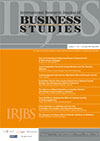Knowledge Communication Strategy in Infrastructure Business
DOI:
https://doi.org/10.21632/irjbs.16.2.211-219Keywords:
Knowledge communication, Knowledge management, InfrastructureAbstract
Infrastructure development is a program that usually includes mega projects and involves many stakeholders in its implementation, thus providing great opportunities for knowledge creation. However, the complexity that arises often prevents the creation of knowledge, either through the process of improving existing knowledge or through the process of discovering new knowledge. The process of changing knowledge through knowledge management to facilitate intra- and inter-organizational knowledge transfer has been discussed in various studies on knowledge management, but specific discussion on how to communicate strategies in knowledge management, especially in the infrastructure industry, is still sparse. This study aims to determine how the knowledge management process and public relations program actions in knowledge communication strategy can be adopted. The strategy will motivate systematic efforts to develop information and knowledge and create value in the future. The methodology used in this paper is searching for data and information through books, journals, and articles related to the topic. The results of this paper provide an understanding of the concepts and strategies of knowledge communication in knowledge management and its application to the infrastructure industry.
References
Aljuwaiber, A. (2019). Technology-Based Vs. Face-To-Face Interaction For Knowledge Sharing In The Project Teams.
International Journal of Project Organisation and Management, 11(3), 227–242. https://doi.org/10.1504/IJPOM.2019.102943
Aminah S., dan Sumardjo, D. L., Susanto, D. (2014). Perubahan Model Komunikasi dan Pergeseran Paradigma Pembangunan
Perspektif Sejarah, Paramita, 24(1).
Augier, M., & Vendelo, M. H. (1999). Network, Cognition and Management of Tacit knowledge. Journal of Knowledge
Management, 3(4), 252–261.
Becerra-Fernandez, I., & R. Sabherwal. (2015). Knowledge Management: System and Processes. New York: Routledge.
Hamad, W. B. (2018). The Role of ICT in Knowledge Management Processes: A Review. International Journal of Engineering
Science and Computing, 8(3), 8. http://ijesc.org/
Law, I., Wai, K. (1955). Information Resources Management: Global Challenges, Idea Group Publishing (an imprint of Idea
Group Inc.)
Nonaka, I. (1994). A Dynamic Theory of Organizational Knowledge Creation. Organization Science, 5(1), 14-37.
Osborne, G. J., Wood, A., & Ishak, S. M. (2022). Knowledge Management Processes in South Australian Infrastructure Projects:
Aligning Key Stakeholders Expectations and Practices. Journal of Modern Project Management, 10(1), 127–139. https://
doi.org/10.19255/JMPM02908
Pyrko, I., Dörfler, V., & Eden, C. (2019). Communities of practice in landscapes of practice. Management Learning, 50(4),
482–499. https://doi.org/10.1177/1350507619860854
Singh, S. (2022). The Role Of Information Technology In Knowledge Management. Journal of Positive School Psychology, 6(4),
1200–1204.
Smith, R. D. (2013). Strategic Planning for Public Relations. New York: Routledge.
Downloads
Submitted
Published
How to Cite
Issue
Section
License
Copyright (c) 2023 Ratna Widianingrum

This work is licensed under a Creative Commons Attribution-ShareAlike 4.0 International License.
Journal Author(s) Rights
For IRJBS to publish and disseminate research articles, we need publishing rights (transferred from the author(s) to the publisher). This is determined by a publishing agreement between the Author(s) and IRJBS. This agreement deals with the transfer or license of the copyright of publishing to IRJBS, while Authors still retain significant rights to use and share their own published articles. IRJBS supports the need for authors to share, disseminate and maximize the impact of their research and these rights, in any databases.
As a journal Author, you have rights to many uses of your article, including use by your employing institute or company. These Author rights can be exercised without the need to obtain specific permission. Authors publishing in IRJBS journals have comprehensive rights to use their works for teaching and scholarly purposes without needing to seek permission, including:
- use for classroom teaching by Author or Author's institution and presentation at a meeting or conference and distributing copies to attendees;
- use for internal training by the author's company;
- distribution to colleagues for their research use;
- use in a subsequent compilation of the author's works;
- inclusion in a thesis or dissertation;
- reuse of portions or extracts from the article in other works (with full acknowledgment of the final article);
- preparation of derivative works (other than commercial purposes) (with full acknowledgment of the final article);
- voluntary posting on open websites operated by the author or the author’s institution for scholarly purposes,
(But it should follow the open access license of Creative Common CC-by-SA License).
Authors/Readers/Third Parties can copy and redistribute the material in any medium or format, as well as remix, transform, and build upon the material for any purpose, even commercially. Still, they must give appropriate credit (the name of the creator and attribution parties (authors' detail information), a copyright notice, an open access license notice, a disclaimer notice, and a link to the material), provide a link to the license, and indicate if changes were made (Publisher indicates the modification of the material (if any) and retain an indication of previous modifications.
Authors/Readers/Third Parties can read, print and download, redistribute or republish the article (e.g. display in a repository), translate the article, download for text and data mining purposes, reuse portions or extracts from the article in other works, sell or re-use for commercial purposes, remix, transform, or build upon the material, they must distribute their contributions under the same license as the original Creative Commons Attribution-ShareAlike (CC BY-SA).
This work is licensed under a Creative Commons Attribution-ShareAlike 4.0 International License.








